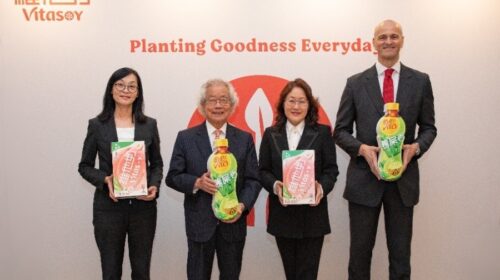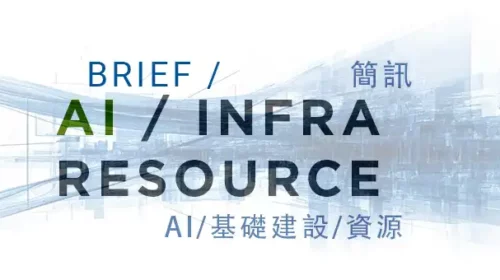Lanvin inaugural results: Belle of the ball, or luxury runner-up?

The owner of several high-end fashion brands touted record sales and margin improvement for 2022, but revenue fell short of its earlier projection and its net loss widened
Key Takeaways:
- Lanvin’s revenue increased 37% in 2022 from the prior year, while its gross margin improved by a percentage point
- The luxury brand’s net loss widened last year, raising questions on whether it can meet its target of breaking even by 2024
By Warren Yang
It may consider itself a leading global luxury brand, but Lanvin Group Holdings Ltd. (LVN.US) can only dress up its far-less-glamorous financial reality so much.
In its inaugural financial resultsreleased last week following its backdoor listing last December, the luxury apparel maker highlighted its record-breaking sales in 2022 and continuous margin improvements. In absolute numbers, that is indeed the case, with the company’s revenue up 37% to 422 million euros ($464 million) last year, and its gross margin increasing by a percentage point to 56%.
At first glance, the revenue growth looks pretty decent. By comparison, LVMH (MC.PA), the fashion giant whose brands include Louis Vuitton, posted 23% revenue growth last year, while Kering (KER.PA), whose portfolio includes Gucci, grew just 15%. But both of those companies are much larger than Lanvin, raking in tens of billions of euros in annual sales. They are also solidly profitable, while Lanvin is deeply in the red.
What’s more, Lanvin’s 2022 revenue fell short of what it projected when it was trying to drum up investor interest during its listing last year by merging with a special purpose acquisition company (SPAC). In an investor presentation last March, the company forecast its revenue would hit 473 million euros in 2022, some 12% higher than the final figure. It further forecast the figure would balloon to nearly 1 billion euros by 2025, though last year’s miss makes such a bullish prediction look less certain.
Perhaps more importantly, the company reiterated in its maiden earnings report that it’s on track to break even next year. But the numbers aren’t so convincing. Lanvin uses a metric called “contribution profit” in its earnings announcement, which it says is essentially its gross profit minus selling and marketing expenses. The profit measured this way increased 44% to 13 million euros last year.
But the picture is less glamorous for the more standard-looking net income that isn’t in the earnings announcement but is included in Lanvin’s annual report for last year. The contribution profit is immediately exceeded by general and administrative expenses, for starters. And with other items eating into its profits, the company’s net loss more than tripled to 240 million euros last year from 2021, according to the annual report.
Lanvin says that two of its other brands — Wolford and St. John Knits — are now generating a positive contribution profit, and it will scale up those operations to help the entire company reach profitability.
But going from more than 200 million euros in the red to breaking even in a few years seems pretty ambitious, assuming its “break-even” target refers to its profit on a net, and not some other, basis. That’s especially so because the company’s overall operating expenses are so large compared to its revenue. Also, expansion will require further spending.
Lanvin shares rose a bit after the earnings release last Thursday. But they slid for two straight days after that, indicating investors didn’t see much to stay excited about in its results and may instead be skeptical about the company’s rosy projections.
Fosun luxury play
Lanvin became part of Fosun — the business empire built by Chinese billionaire Guo Guangchang, a man once called China’s Warren Buffett — in 2018 during the group’s aggressive debt-fueled campaign to amass big global brands, including English football club the Wolverhampton Wanderers and the Club Med resort chain.
But around that time, Beijing was stepping up its own campaign to rein in debt-laden groups that also included the similarly acquisitive Dalian Wanda Group and HNA Group. In a broader bid to generate cash to pay down some of its huge debt, Fosun raised $150 million at the end of last year by taking Lanvin public.
The process was quite drawn-out, taking nine months as Lanvin’s mooted enterprise value ultimately dropped by a third to $1.5 billion. The company’s shares have lost nearly half their value since completion of the SPAC merger, giving Lanvin a current market value of $680 million.
Under Fosun’s ownership, Lanvin, which was created in 1889 in a Paris hat shop, has been focusing on tapping into a strong appetite for luxury in its home China market. The company’s Greater China sales more than doubled from 2020 to last year to account for more than 10% of its total revenue. That runs counter to trends seen at LVMH and Kering, whose Asia revenue, excluding Japan, declined 8% last year.
Lanvin’s biggest challenge in China, or anywhere else, is its relatively weak brand awareness in a segment where recognizability is a key driver of sales. Taking market share from the likes of Chanel, Dior and Gucci will undoubtedly be an uphill battle for the lesser-known Lanvin.
For Lanvin and its other second-tier brands to boost sales by raising their profile would require a huge marketing blitz, which would only eat into the company’s bottom line in the short-term. China’s recovery from prolonged Covid-19 restrictions may also take some time, with the government setting a rather modest target of 5% growth for this year. This means that luxury goods won’t exactly fly off shelves anytime soon in the current cautious economic climate.
Under pressure to raise capital and improve its finances, Fosun is still busy selling some of its other assets. But it will probably hold on to Lanvin, given that Fosun is consolidating its businesses around its household consumption-related assets. Lanvin is part of Fosun’s “happiness segment,” which comprises brand consumption, tourism and leisure.
Fosun may still consider selling more shares in Lanvin if it needs a bit of extra cash. Its Hong Kong-listed Fosun International (0656.HK) owns 65% of Lanvin, which gives it plenty of room to sell down its stake without giving up control.
But whether any new investors would want a piece of Lanvin is a different matter. Reflecting a lack of investor enthusiasm, the company’s stock currently trades at a price-to-sales (P/S) ratio of 1.7, half the 3.4 for Kering and a third of the 5.3 for LVMH.
The SPAC listing for Lanvin took some time and effort to complete. But the company may now need to realize that appealing to investors in the long-term will require much more than making its numbers look pretty. Or perhaps it has learned that lesson already from the lukewarm investor response despite its efforts to dress up its maiden earnings package.
To subscribe to Bamboo Works weekly free newsletter, click here






